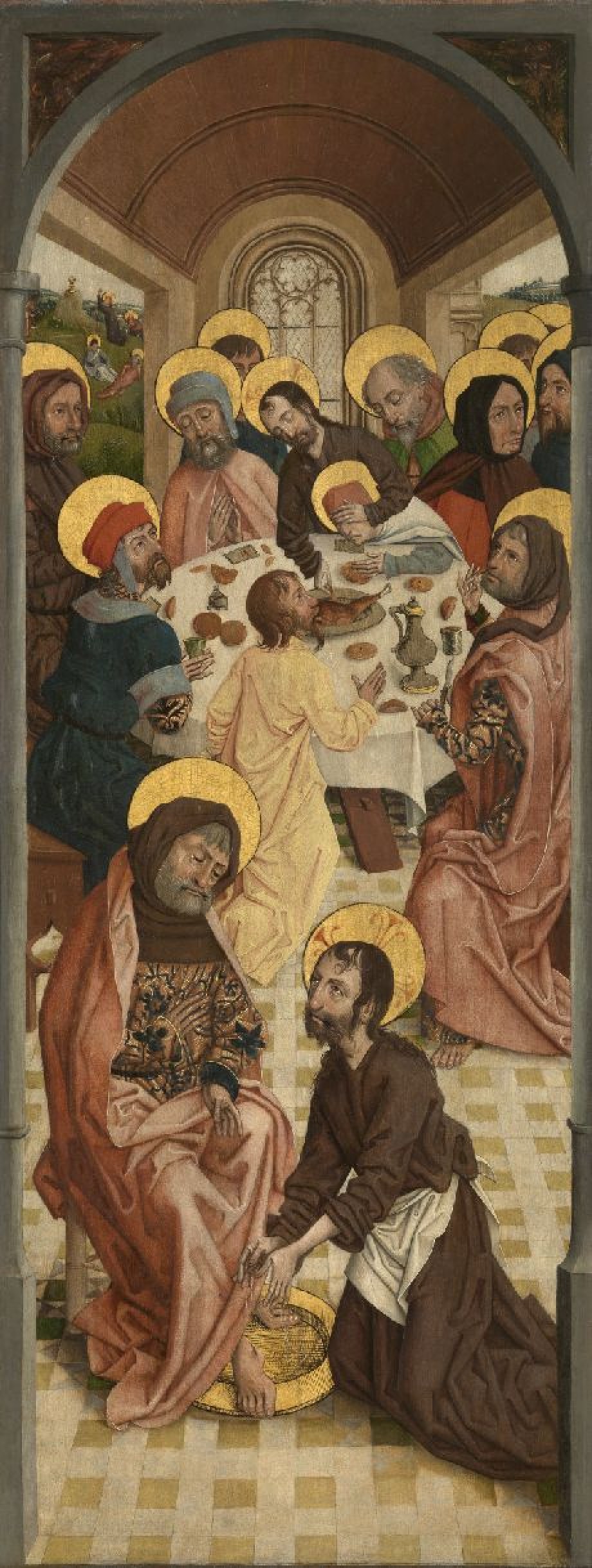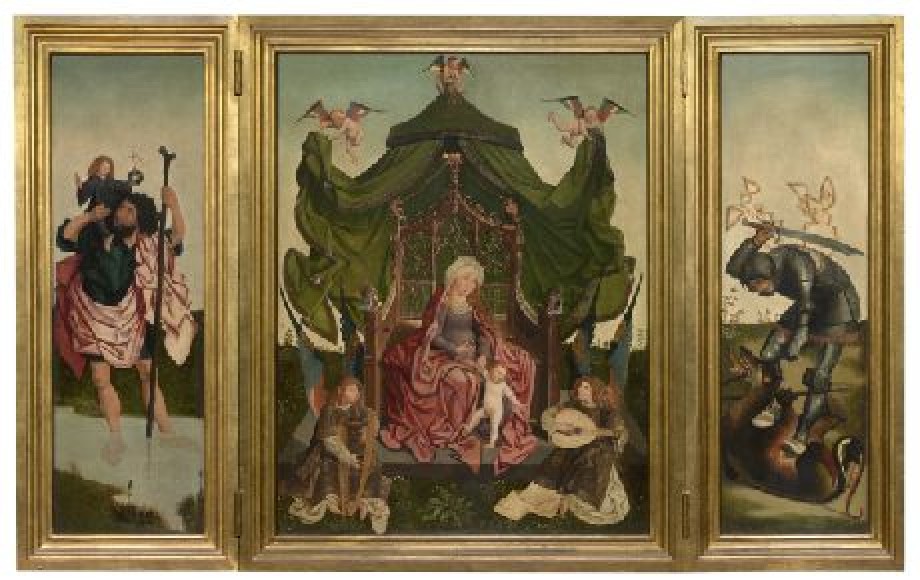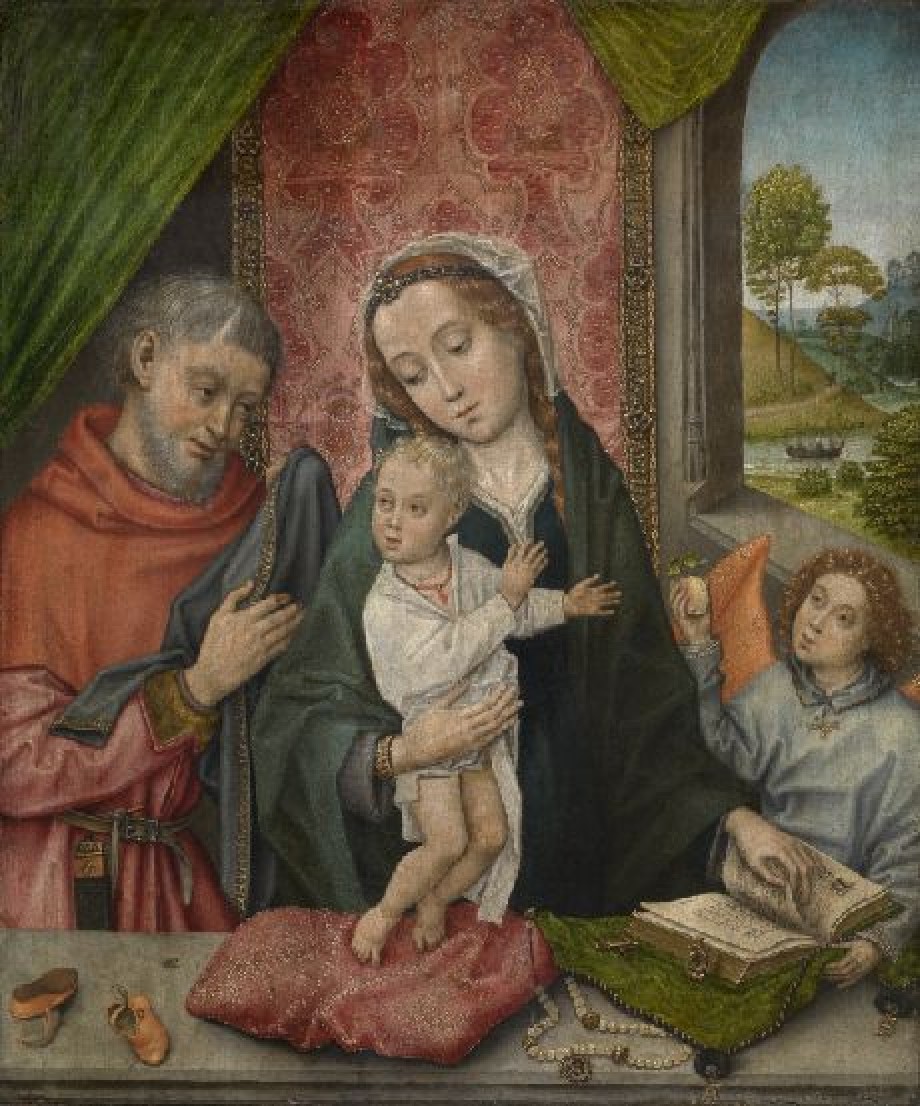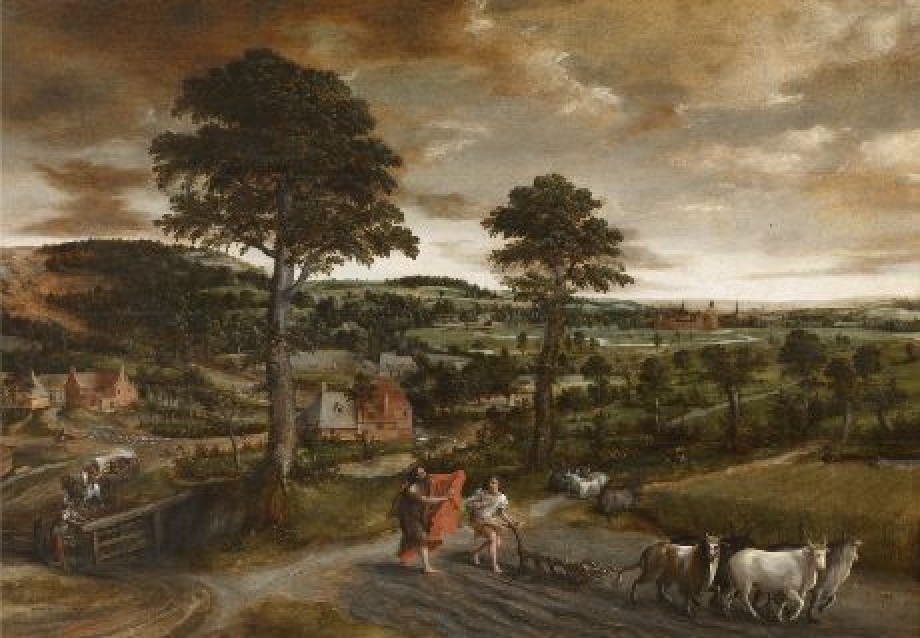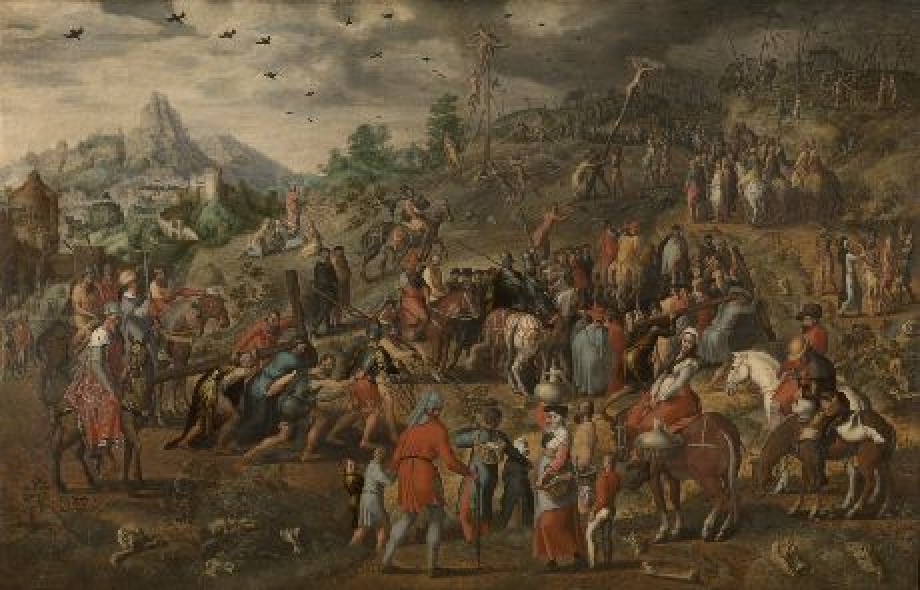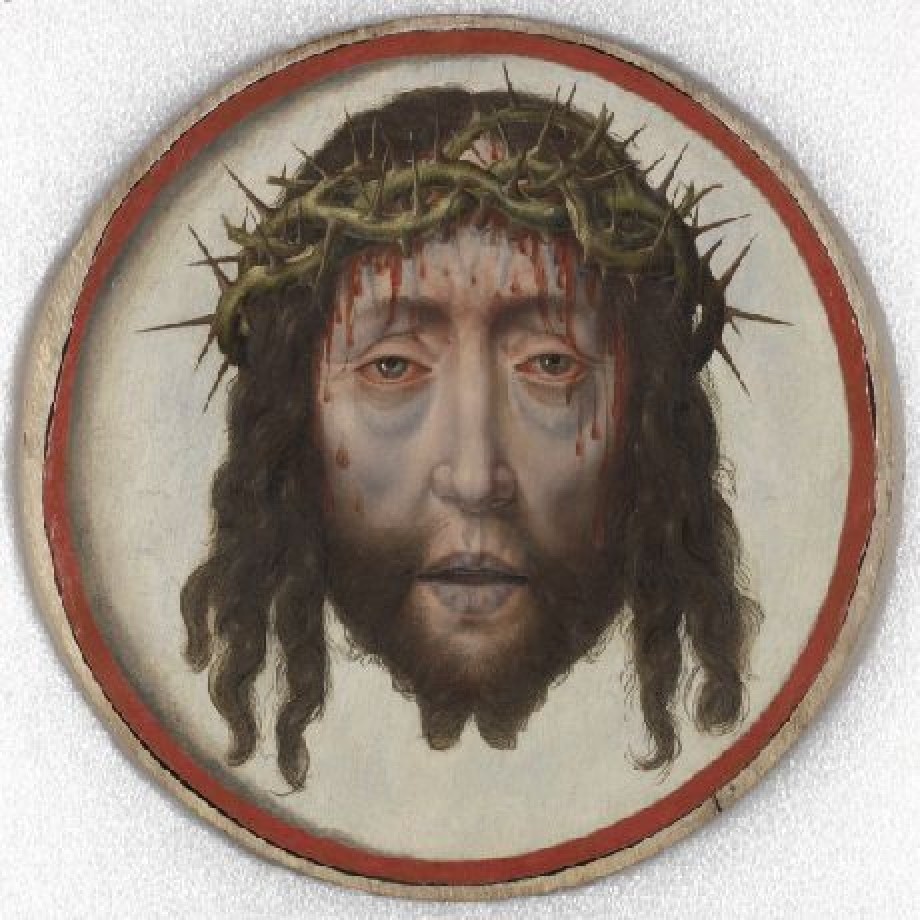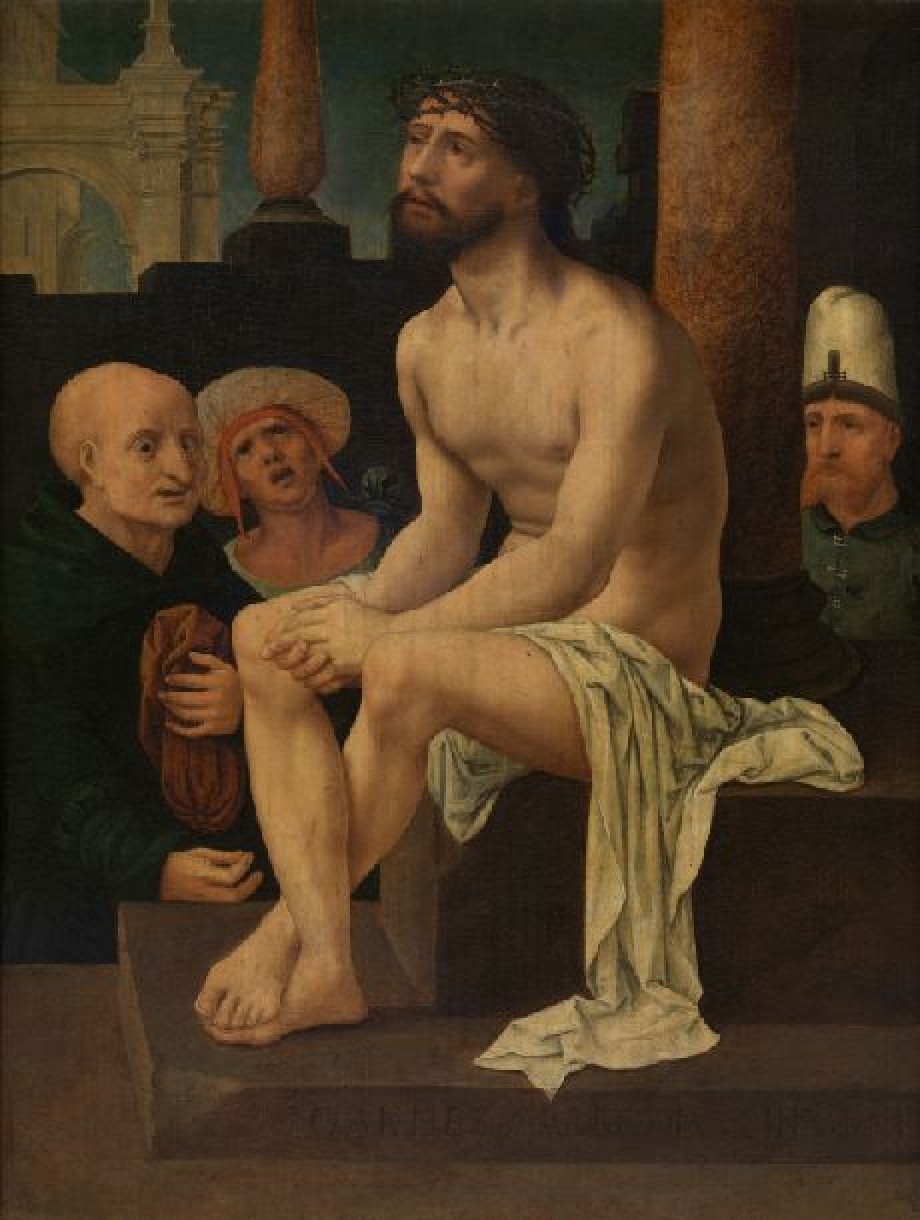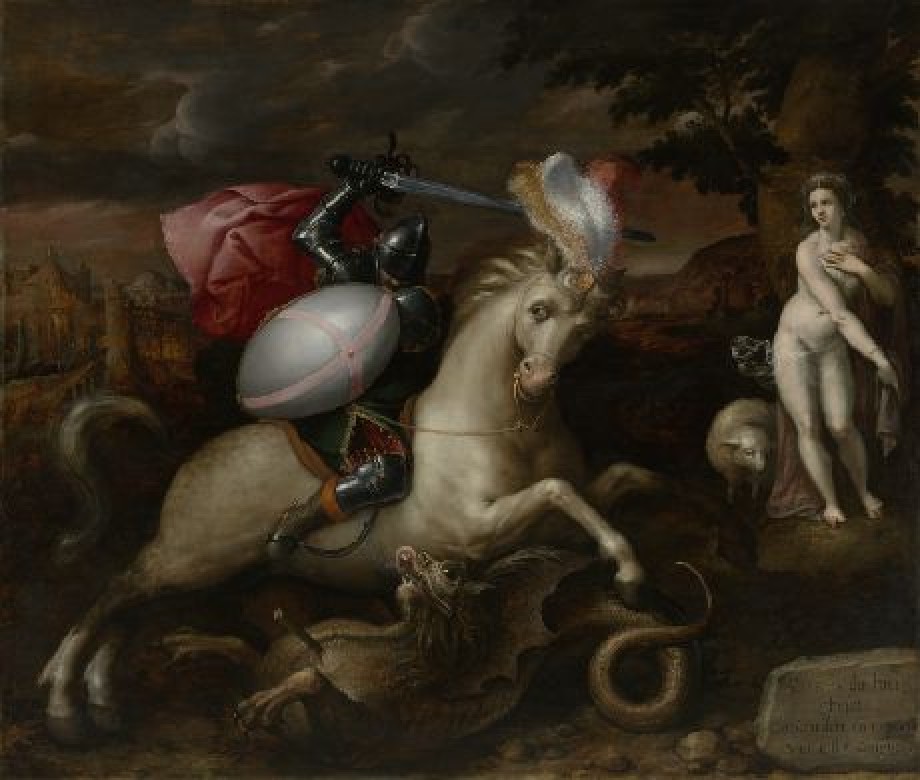Madonna at the Fountain

Artist / maker
Jan van Eyck (painter)Date
1439Period
15th centuryCollection
Royal Museum of Fine Arts Antwerp
The Virgin Mary lovingly cradles the infant Christ at the centre of this small panel. He is curling an arm around her neck and is holding prayer beads in his other hand. The Virgin is standing in front of a luxurious cloth of honour that is decorated with brocaded plant and animal motifs. Two angels with coloured wings are holding…
Read more
The Virgin Mary lovingly cradles the infant Christ at the centre of this small panel. He is curling an arm around her neck and is holding prayer beads in his other hand. The Virgin is standing in front of a luxurious cloth of honour that is decorated with brocaded plant and animal motifs. Two angels with coloured wings are holding it up. The flowers growing in the background include lilies of the valley, roses and irises. Standing in the foreground is a metal fountain with a lion on top. It symbolises the Virgin, who is praised as a ‘fountain’ in biblical texts, such as the Song of Solomon 4:15.
The wooden frame is part of the painting, as was often the case with late medieval panels. Van Eyck painted it with a marble pattern. At the bottom there is a date with a signature. He added his personal motto: ‘As I can’, which is derived from the standard formula of ‘As good as I can, not as good as I would wish’. On the one hand Van Eyck stated that he is proud of his work (he painted it as well as he could), but on the other hand he was modest (recognising the limits of his abilities). Most artists in the late Middle Ages regarded themselves as craftsmen and did not sign their work. Van Eyck was a self-assured artist, as became the norm later in the Renaissance.
The small size of the picture suggests that it was a work for private devotion, before which the owner prayed at home. The back may also have been painted, for its uneven thickness could indicate that it was sawn down crosswise through the middle at a later date. However, no mention was ever made of a painted reverse in documents.
Van Eyck completed this Madonna at the fountain in 1439, two years before his death. It is not clear for whom it was made. Its earliest verifiable location was in the East Flanders village of Dikkelvenne, near Galere. If it had been there since the 15th century it may originally have belonged to Simon Borluut. He had owned the Hof te Boekhoute in Dikkelvenne since 1437, and was the brother-in-law of Joos Vijdt, who commissioned The Ghent altarpiece from Van Eyck, which is how Borluut could have gotten in touch with the artist.
There are many versions of the composition, some of which are early copies. One of them is perhaps mentioned in the inventories of the collection of Margaret of Austria (1516 and 1522), Governor of the Netherlands. It gives a description of the composition, but the name of the artist is not mentioned. Since names were recorded for other works in the inventory and Van Eyck’s original is clearly signed, the painting with Margaret was probably a later version.
Van Eyck was famed throughout Europe. He refined the technique of oil painting, which enabled him to make gradual transitions and unseen nuances in colour and tone, which give his paintings a very naturalistic look. This is well illustrated here by the play of light and reflections by the fountain.
Read less
